Despite Tadej Pogačar‘s dominance, several exciting technological highlights emerged from the 2025 Tour de France. The chief theme was aerodynamics, but gram counting also appeared to be a priority among teams, both of which were explored throughout the three-week race, particularly in the mountains and the second time trial. While some of the modifications were innovative, none of them were entirely new, as many of these hacks have been implemented in the local time trial and hill climb scene for years already.
This comes as no surprise, given the spotlight placed on functional aerodynamics and how teams can best utilise equipment and bike position to go faster with less effort – after all, the man leading the charge and changing the mindset among riders and teams is a British aerodynamics engineer and former racing cyclist, Dan Bigham. The Red Bull-Bora-hansgrohe Head of Engineering has got riders and other teams to actively think of the rider and equipment as one system rather than two separate entities – and is perhaps the catalyst behind the aero revolution we saw at this year’s race.
Let’s take a closer look at some of the trends.
Rise of the do-it-all aero bike
Not long ago, the rhetoric among teams on bike choice was three-fold: a lightweight climbing bike built to the UCI’s minimal 6.8kg weight rule for the mountains, an aero bike for flatter stages, and a time trial bike for going up against the clock. Despite Visma–Lease a Bike, bringing an all-new prototype Cervelo R5 to the Tour and UAE Team Emirates-XRG having access to the Colnago V5Rs, both teams went the other way and opted for aero bikes instead. The same mindset was also carried out at Jayco AlUla, with Ben O’Connor using a Giant Propel Advanced SL instead of the TCR Advanced SL climbing bike.
The thought process here hinged on cutting weight to get the aero bikes closer to 6.8kg weight limit, which is no mean feat, given that the average aero bike weight is around 7.3-7.5kg. We first caught wind of how the teams were doing this at the mountain time trial on Stage 13, a 10.9km uphill route from Loudenvielle to Peyragudes. We examined Pogačar’s Colnago Y1Rs in detail. His bike was stripped of its paint and featured no bar tape or bottle cages, 140mm rotors, and a lighter saddle, resulting in a total weight of 6.89 kg. This allowed Pogačar to utilise the aero credentials of his Y1Rs without the weight penalty. The Slovenian went on to use this bike for the remainder of the Tour de France, albeit with his bar tape, cages, and 160mm rotors refitted.
Image 1 of 3
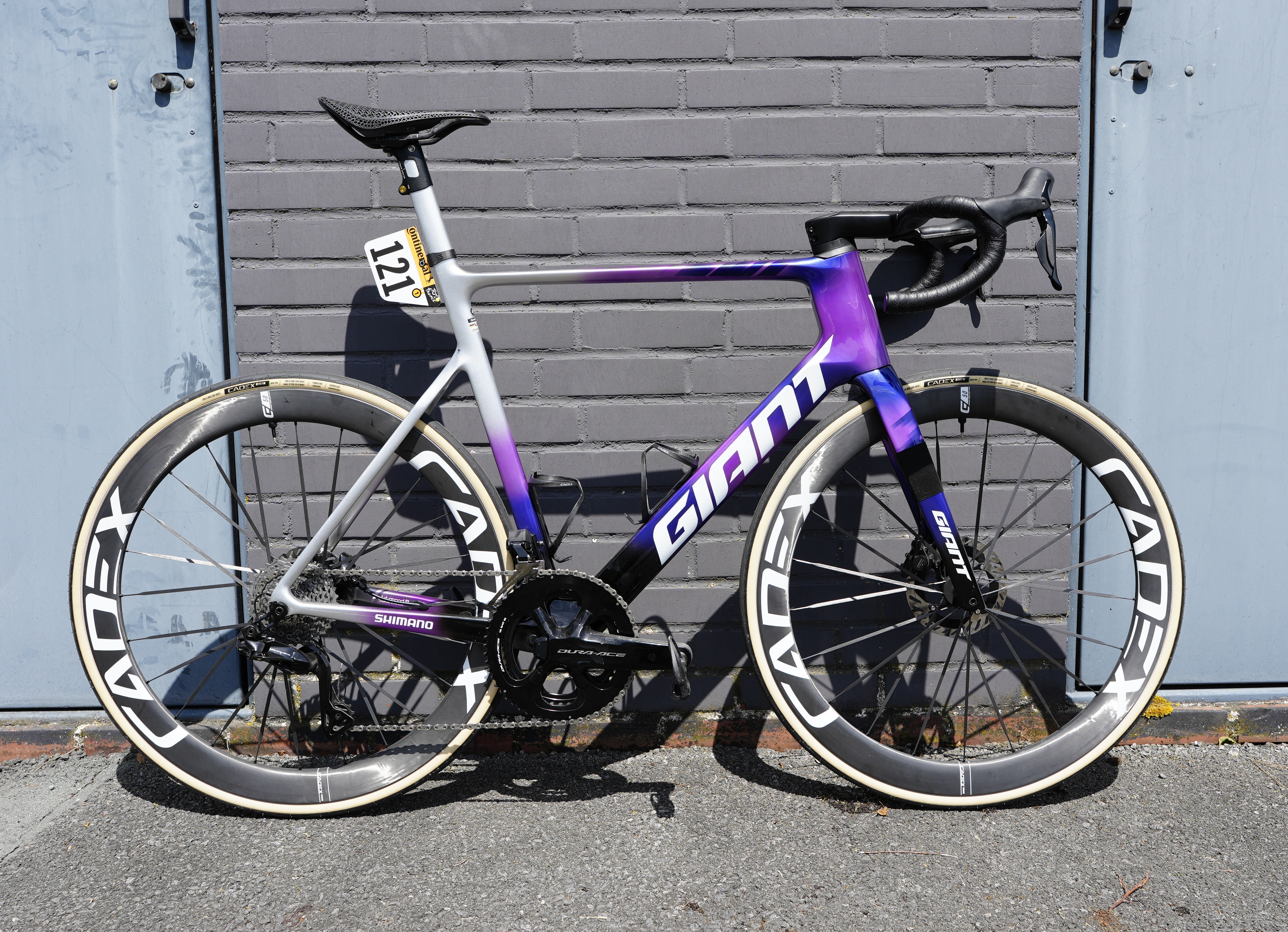
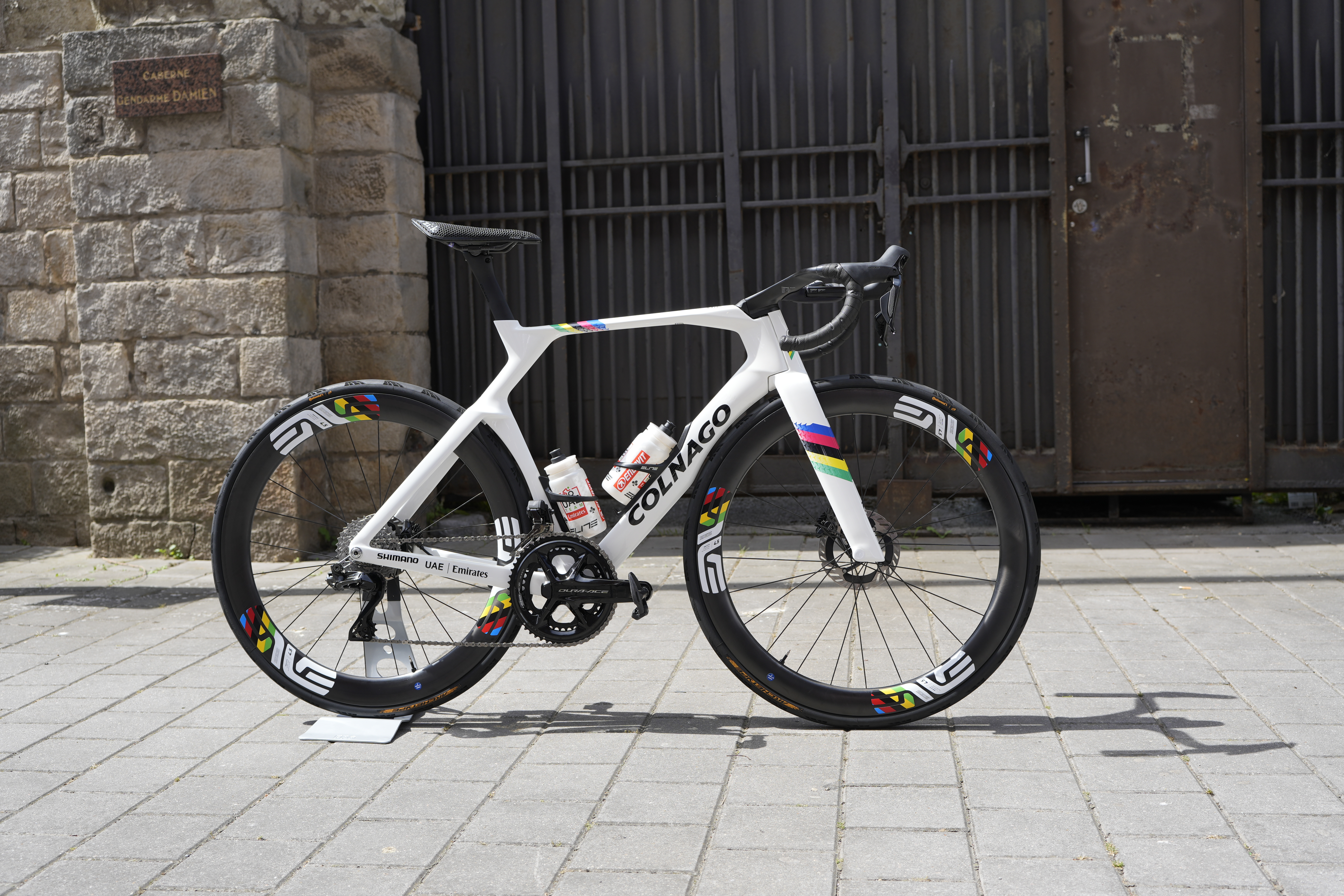
While we can’t confirm if similar measures were taken for Jonas Vingegaard and his Cervelo S5 (his bike retained the team livery and paint), the new bike’s improved aerodynamics and lightweight design, coupled with a SRAM Red AXS 1x setup, would have culled enough weight to make it competitive in the mountains.
An interesting development was the Giant Propel Advanced SL used by Ben O’Connor during the Tour de France. While he did use his team-issued mauve-coloured Propel Advanced SL, he also used a blacked-out version, stripped down for stage 10’s mountain TT to counter the weight of the solid disc wheel. He went on to use it on stage 18 (the Queen Stage) and rode it to victory on Col de la Loze, proving the benefits a lightweight aero road bike can provide if set up correctly.
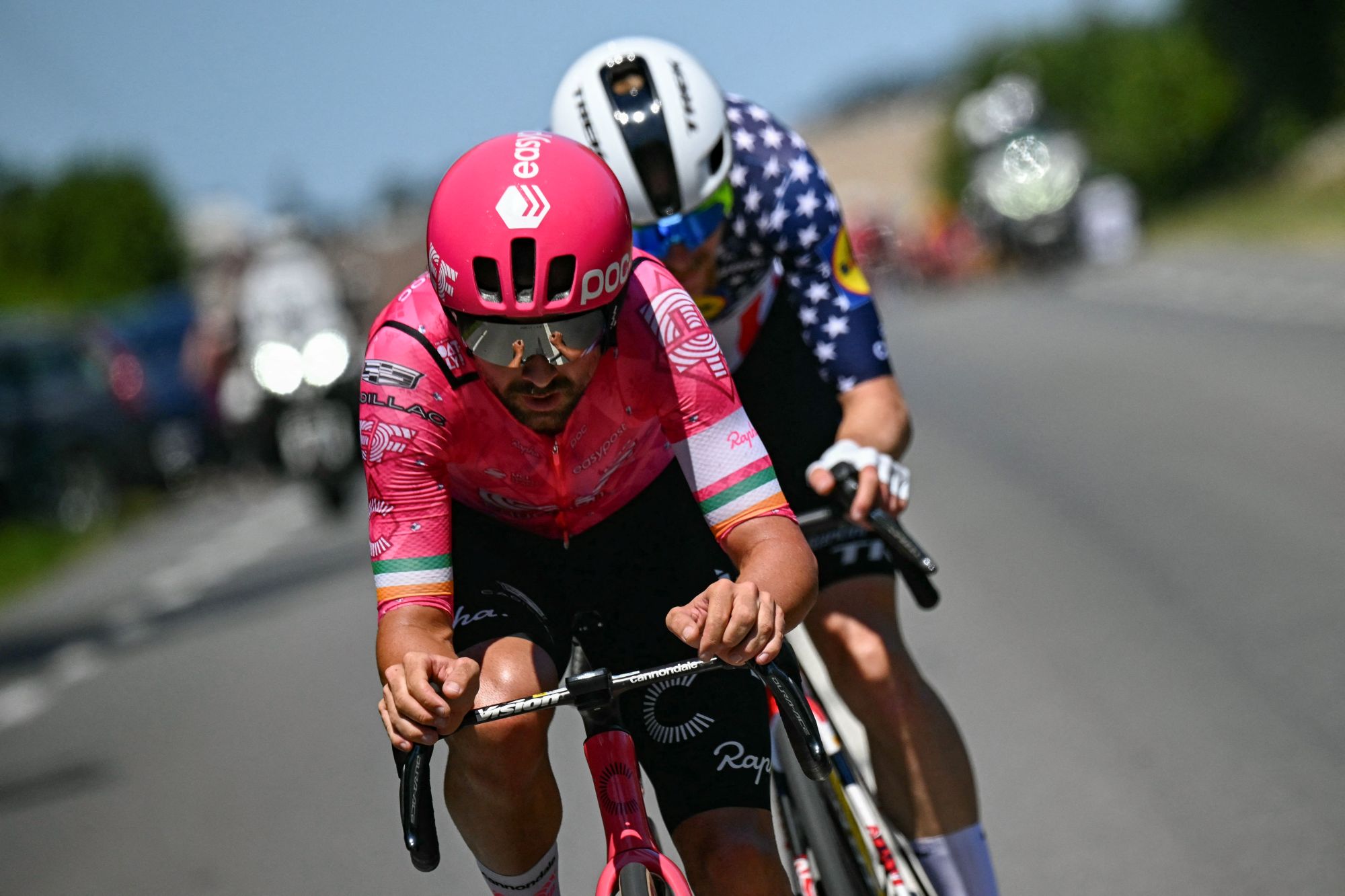
EF Education-EasyPost’s Ben Healy went all in on stage 6, utilising a POC Procen Air road lid, a Rapha Pro Team TT Aero skinsuit with cut sleeves and aero socks to secure stage honours
(Image credit: Getty Images)
Aero road helmets
Aero road bike helmets are nothing new, but it’s only in recent years that we’ve seen them used more liberally among the pro peloton. While it’s tough to quantify the watt savings these helmets provide in the real world, most teams have wind tunnel-tested the helmets available to them to validate which options are the fastest.
Of the teams going all out in this regard, EF Education-EasyPost and Visma–Lease a Bike were the chief protagonists, with Ben Healy using the POC Procen Air road and Victor Campenaerts employing a Giro Aerohead Ultimate helmet.
While not all-out aero, we also spotted a brand-new Met Trenta hiding in plain sight on the head of Tadej Pogačar. According to our contact at Met, the new lid focuses on improving ventilation and aerodynamics in a much safer package than the outgoing model.
Go-faster kit hacks
We saw numerous kit hacks at this Tour de France, which has emphasised that riders are looking for other ways to gain an edge over their rivals. Of all the riders, Ben Healy was the chief protagonist throughout the three-week race. Not only did the Irishman use the POC Procen air helmet discussed above, but he also appeared to have cut the sleeves off his Rapha Pro Team TT Aero skinsuit to stay cool without negatively impacting the aero benefits, and used aero socks, too. The culmination of these small yet effective modifications helped him solo away from the group and win stage 6 in Vire Normandie.
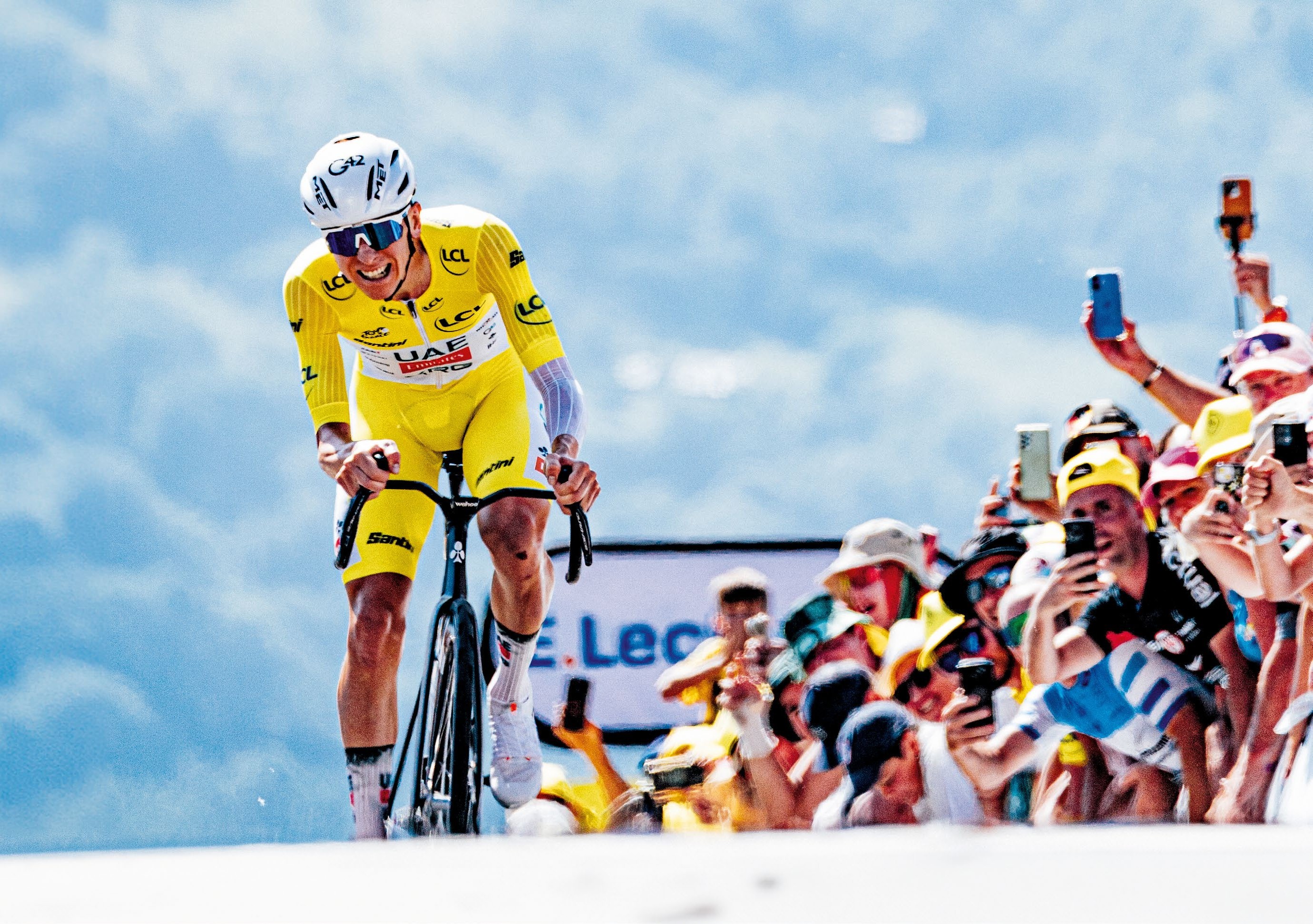
Tadej Pogačar used a baselayer arm sleeve to cover his bandage and perhaps give him a slight aero boost in the process
(Image credit: Words: Adam Becket)
Of all the innovative tweaks, the Richard Mille-branded aero arm sleeve of the 2025 Tour de France overall winner, Tadej Pogačar, was a genius move. After crashing on stage 11 and injuring his left arm, the Slovenian used the baselayer arm sleeve from the stage 13 mountain time trial onwards in a move that doubled up as an arm bandage cover. Simple stickers placed over thru-axle closures on the fork presumably did well enough, they added Colnago logos to them by the end of the Tour!
Time trial experimentation
The mountain time trial of stage 13 was an intriguing stage for many reasons, primarily due to the unusual technology and radical tweaks carried out by many of the teams. It’s this kind of innovation that proves professional cycling can indeed be innovative, even with the nannying rules imposed by the UCI.
Due to the mountainous parcours on offer, there were two schools of thought regarding bike choice: a lightweight time trial bike or a stripped-down aero bike. These two options were further broken down into full-fat and lightweight time trial bikes, or a standard aero bike with deep-section front/rear wheels or solid disc rear.
Of the riders using traditional time trial bikes, Remco Evenepoel opted for his Specialized Shiv time trial bike with Roval Rapide CLX III wheels front and back, eschewing a heavier disc rear wheel – to ensure optimal power production, Soudal Quick-Step paired these changes with a new bike fit.
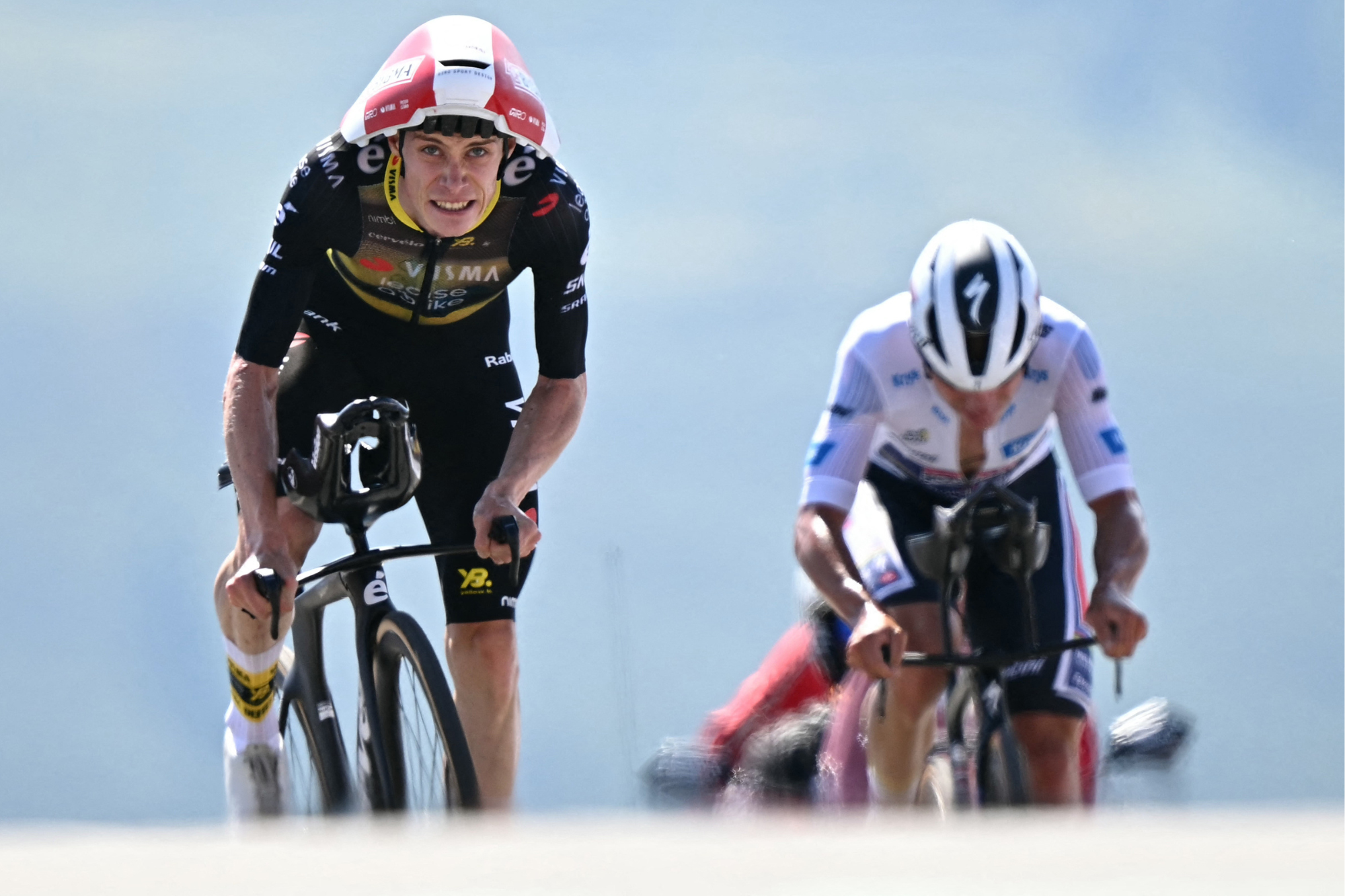
Vingegaard and Evenepoel used traditional time trial bikes but put them on a diet, in this instance, shallower wheels to save weight
(Image credit: Getty Images)
Red Bull-Bora-hansgrohe and Primož Roglič used the same thought process, employing a Specialized Shiv time trial bike with shallow wheels, as did Visma–Lease a Bike, with Jonas Vingegaard using a Cervelo P5 equipped with shallower Reserve 40|49 wheels, a 1x drivetrain, and Vittoria Corsa Pro Speed TLR tyres optimised for weight reduction.
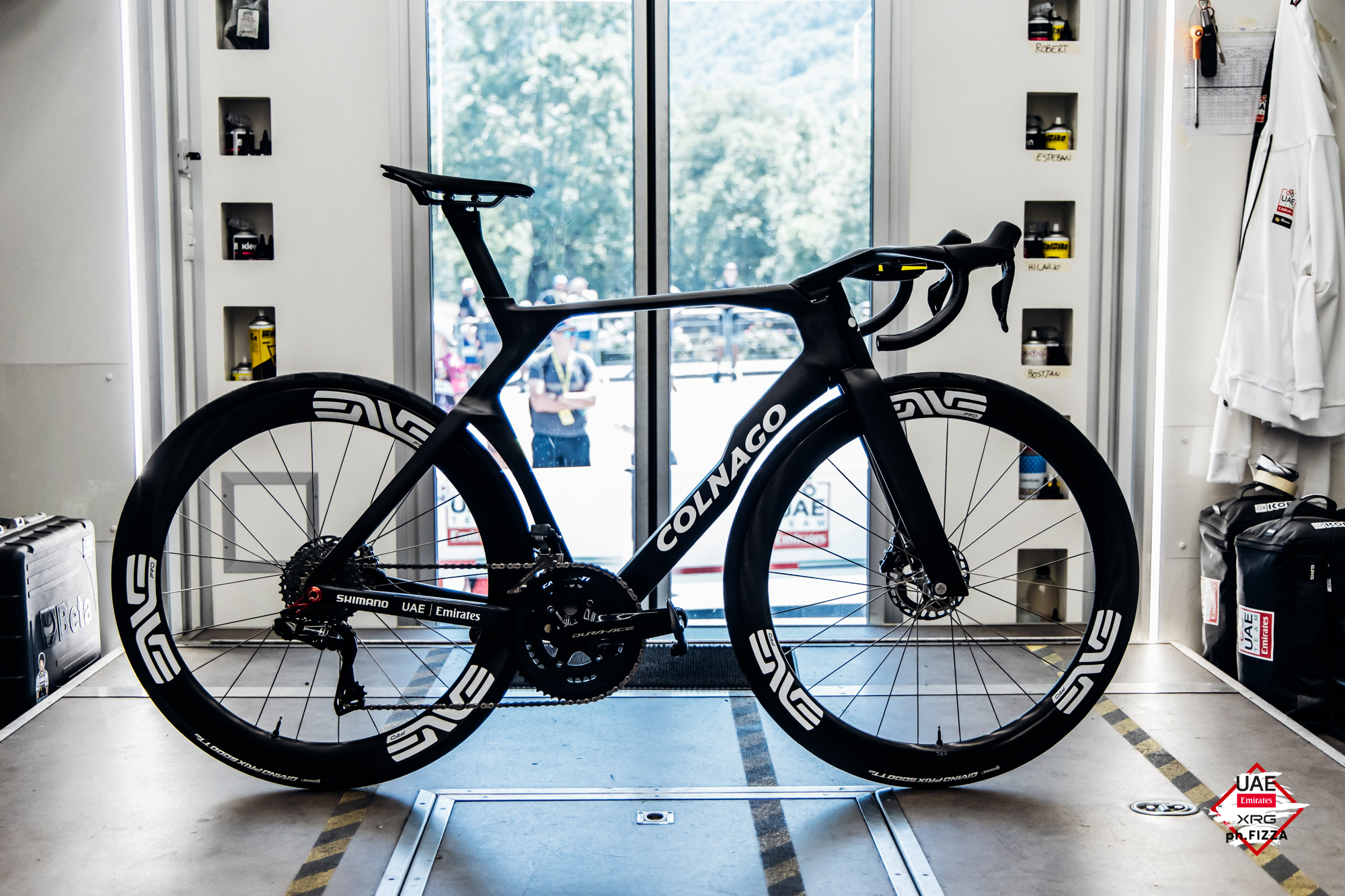
By removing the paint, bar tape, bottle cages and using a lighter saddle and smaller 140mm rotors, Team UAE Emirates-XRG were able to drop the weight of the Colnago Y1Rs to 6.89kg
(Image credit: UAE Team Emirates XRG – Colnago)
Tadej Pogačar went on to win stage 13 using a stripped-down, paintless version of his Colnago Y1Rs with regular Enve SES 4.5 Pro wheels but ditching bar tape, bottle cages, and opting for smaller 140mm rotors. Ben O’Connor and Team Jayco AlUla opted for a similar approach, using a paintless Giant Propel Advanced SL paired with smaller rotors and a 40mm Cadex Max wheel up front, along with a Cadex Max rear disc wheel.
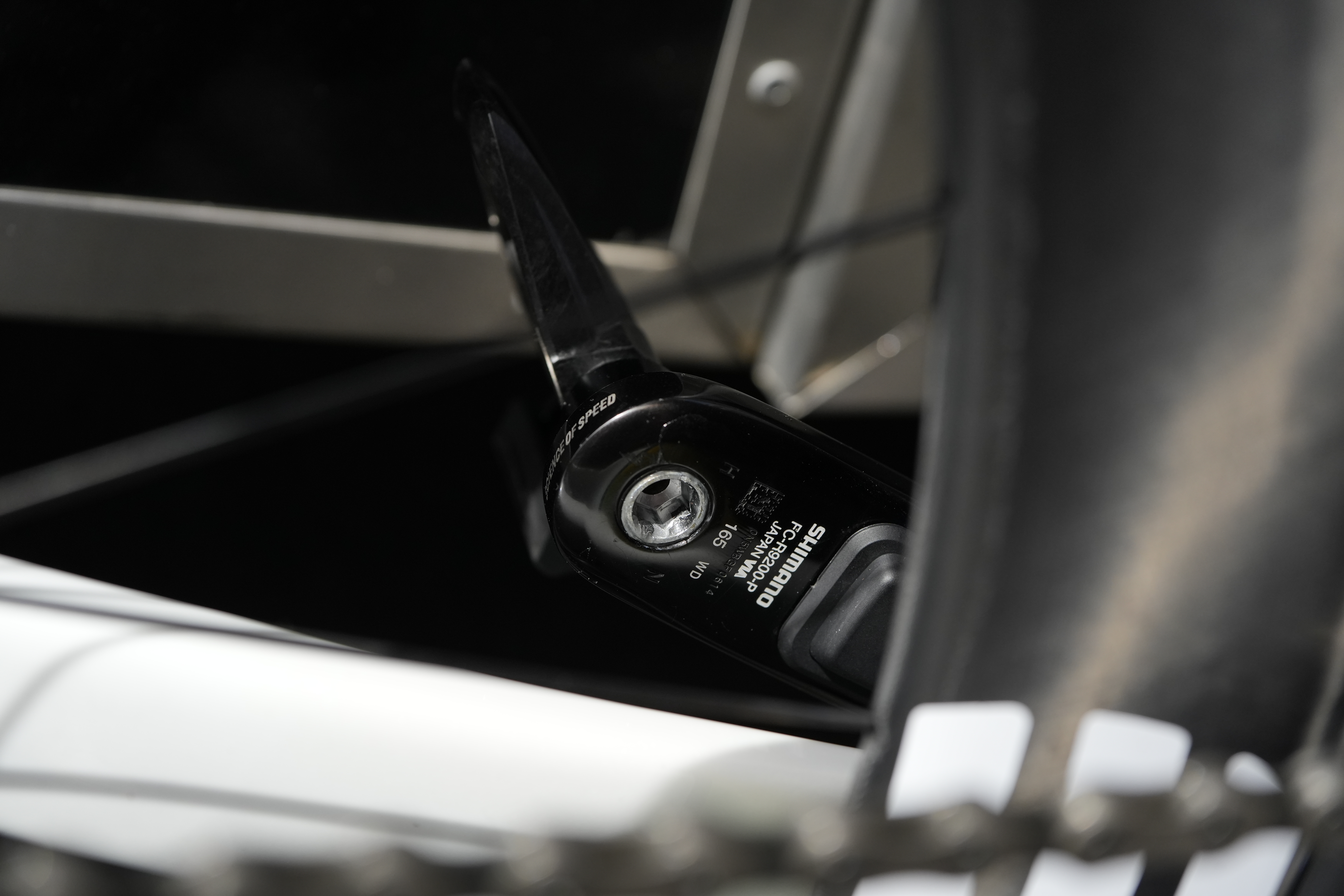
Despite the rage among the pro peloton for shorter cranks, there is still a significant group of riders who are opting for lengths ranging from 170- to 172.5mm
(Image credit: Andy Carr)
The curious case of differing crankarm lengths
Rewind 10 years and crank length was set at three main options: 170-, 172.5- and 175mm. While riders have always experimented with varying the length, the research at the time suggested that optimal leverage and efficiency were achieved using one of the three options. In 2016, Vincenzo Nibali made headlines for switching from 172.5- to 175mm cranks as recommended by his trainer, Paolo Slongo, to enhance his power output by providing more leverage on steeper climbs – but it seemed to backfire on the Italian.
New research, however, has suggested that shorter crankarms allow riders to raise their saddles to achieve a more aero riding position without closing the hip angle and losing power.
At the 2025 Tour de France, it wasn’t the shorter carnkarms that dominated the headlines, but rather the widely employed middle ground lengths of 170- and 172.5mm. Of all the lengths available to riders, it seems as though 175mm is totally obsolete, with even the tallest riders in the peloton opting for 172.5mm or shorter instead.
Among the GC riders, there appear to be bigger incremental jumps in crankarm length, with both Tadej Pogačar and Remco Evenepoel opting for 165mm crankarms. In contrast, Jonas Vingegaard has been seen experimenting with extremely short 150mm crankarms but settled on 160mm for this year’s Tour.
